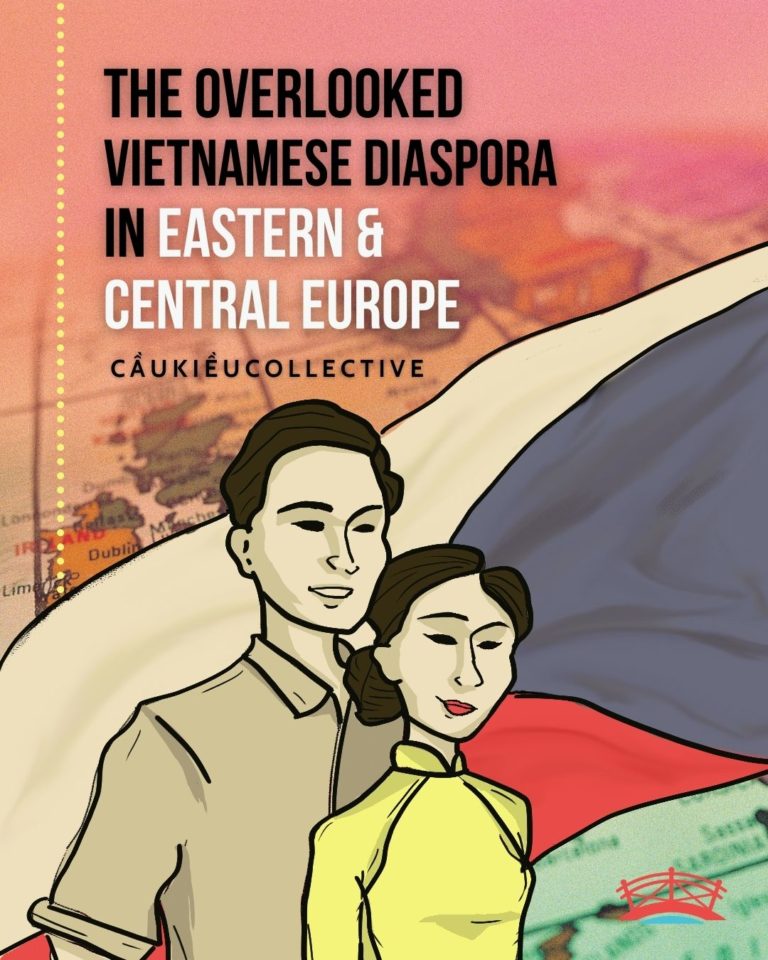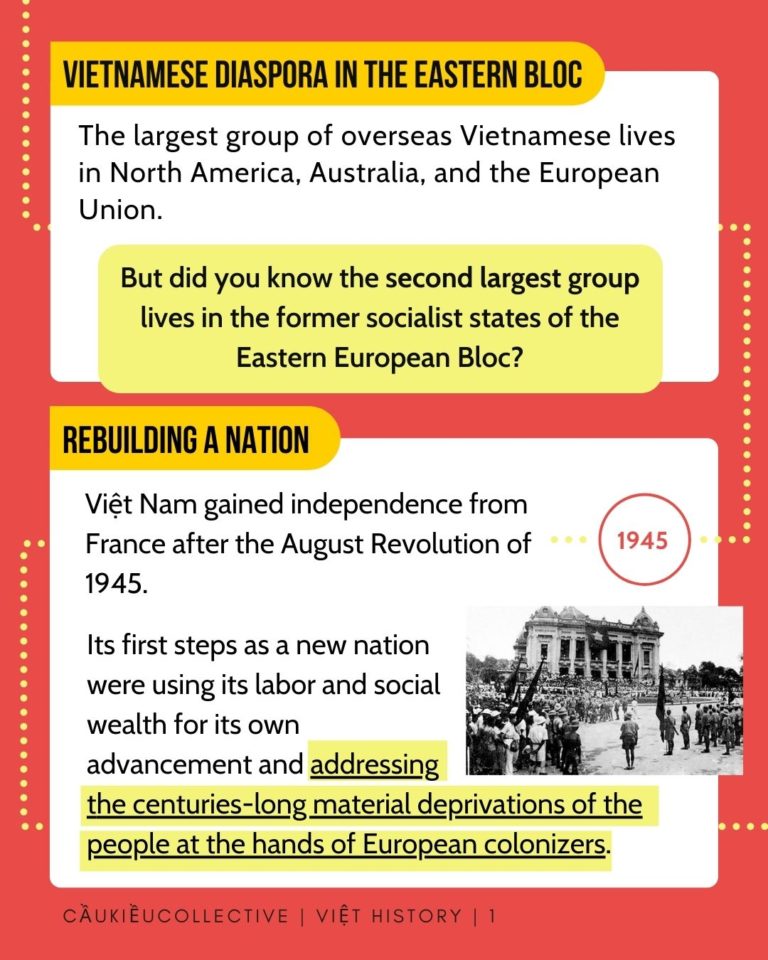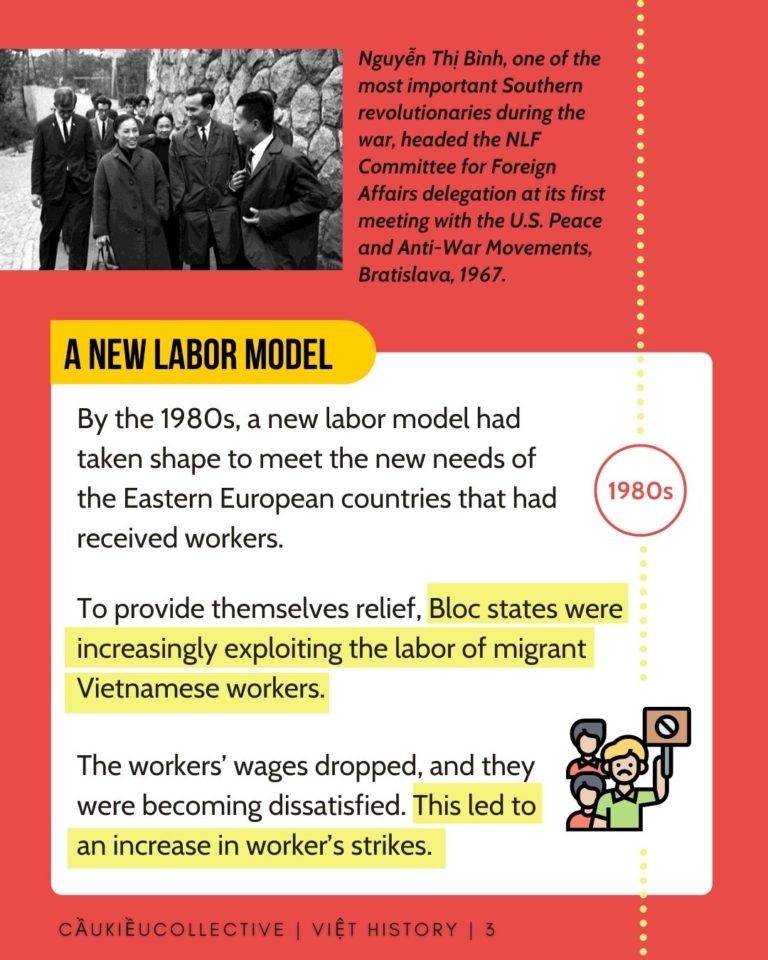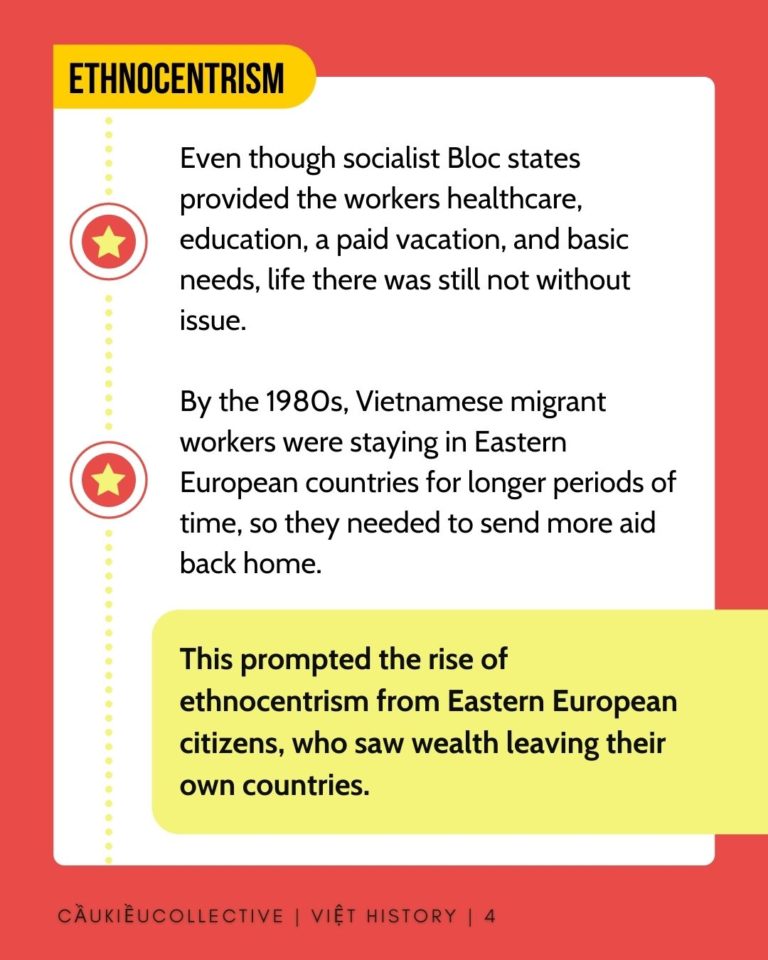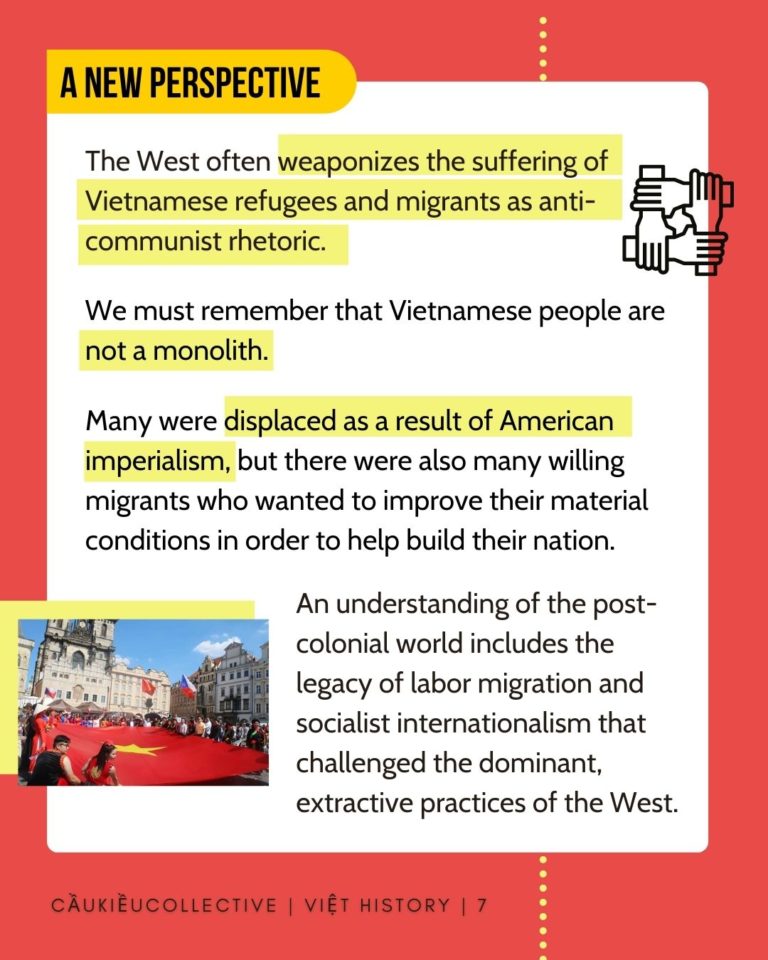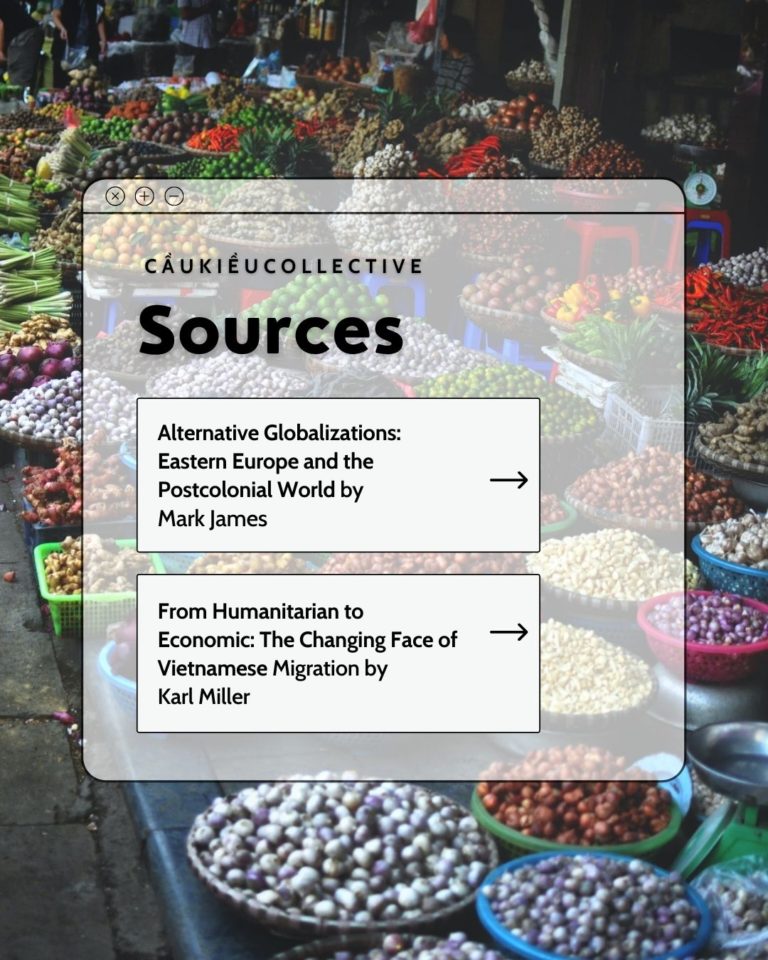Vietnamese Diaspora in the Eastern Bloc
The largest group of overseas Vietnamese lives in North America, Australia, and the European Union.
But did you know the second largest group lives in the former socialist states of the Eastern European Bloc?
Rebuilding a Nation
Việt Nam gained independence from France after the August Revolution of 1945.
Its first steps as a new nation were using its labor and social wealth for its own advancement and addressing the centuries-long material deprivations of the people at the hands of European colonizers.
Socialist Programs
1967 – Between 1967 to 1990, Việt Nam sent nearly 275,000 workers and trainees to Eastern European countries that were part of the Council for Mutual Economic Assistance (CMEA).
While western European countries needed workers to rebuild themselves after WWII, Eastern European countries trained workers to rebuild newly decolonized states, like Vietnam.
These labor schemes were based on the principles of solidarity and technological aid.
Vietnamese labor migration into CMEA countries was an act of socialist internationalism, because the goal of Việt Nam’s anti-colonial revolution aligned with the socialist cause globally.
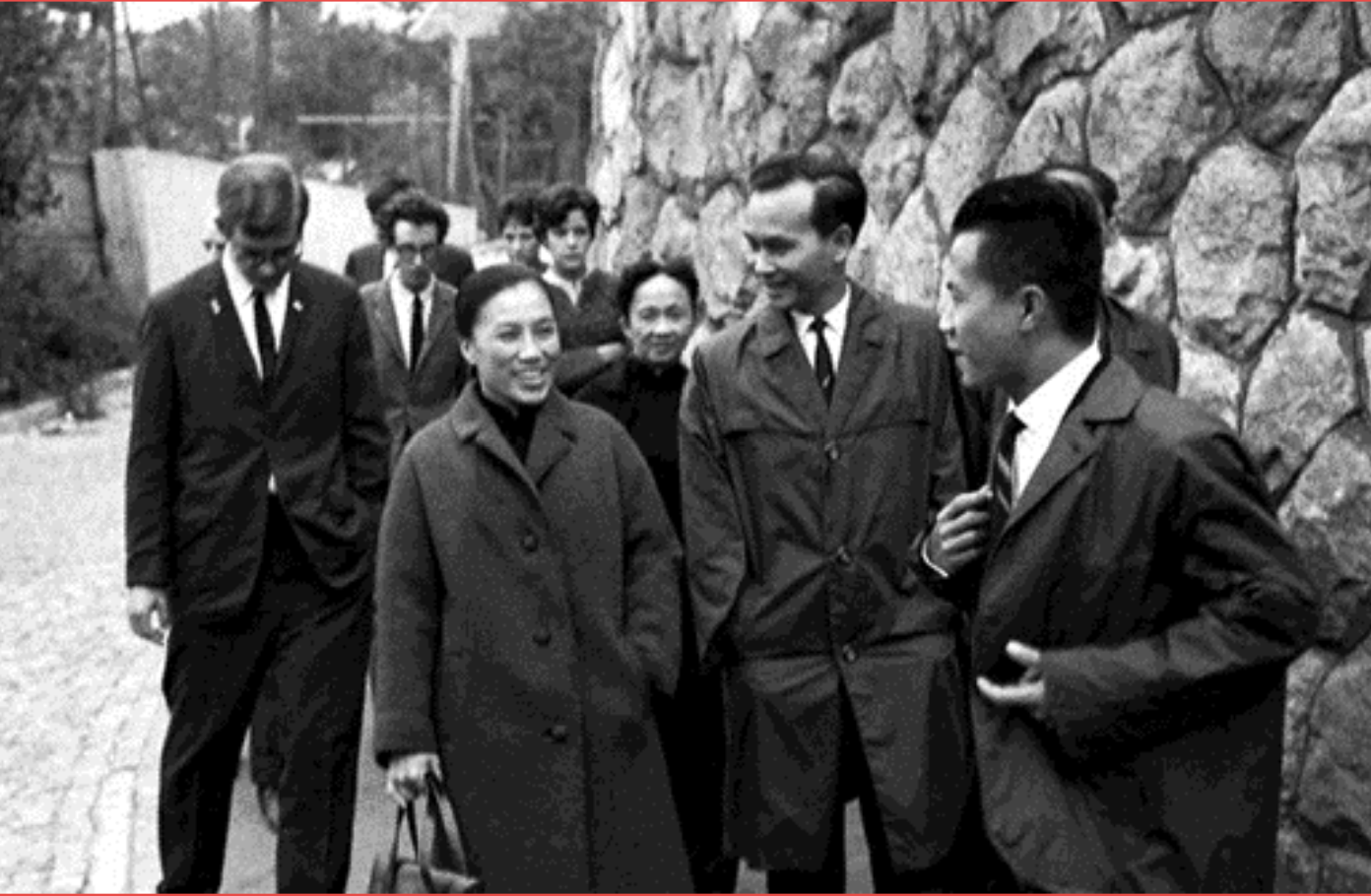
A New Labor Model
By the 1980s, a new labor model had taken shape to meet the new needs of the Eastern European countries that had received workers.
To provide themselves relief, Bloc states were increasingly exploiting the labor of migrant Vietnamese workers.
The workers’ wages dropped, and they were becoming dissatisfied. This led to
an increase in worker’s strikes.
Ethnocentrism
Even though socialist Bloc states provided the workers healthcare, education, a paid vacation, and basic needs, life there was still not without issue.
By the 1980s, Vietnamese migrant workers were staying in Eastern European countries for longer periods of time, so they needed to send more aid back home.
This prompted the rise of ethnocentrism from Eastern European citizens, who saw wealth leaving their own countries.
Shift in Vietnamese labor
Migration from the socialist assistance rhetoric was always designed with the intent to train and rebuild Việt Nam.
Vietnamese labor was not set up to be exploited, it was initially conceptualized and practiced before the contradictions of the 1980s became more salient.
The Vietnamese workers and the state often worked hand in hand to press their overseas counterparts for accountability and better wages.
- 1990s –
The agency of the Vietnamese workers was highlighted when many of them went on strike and succeeded in collectively bargaining for better wages and working conditions, with the support of the Vietnamese state.
However, in the early 1990s, many Vietnamese graduate students found their specialized degrees became worthless as the state system disappeared following the collapse of the Eastern Bloc and Soviet Union, with most migrants electing to return back to Vietnam.
A New Perspective
The West often weaponizes the suffering of Vietnamese refugees and migrants as anti-communist rhetoric.
We must remember that Vietnamese people are not a monolith.
Many were displaced as a result of American imperialism, but there were also many willing migrants who wanted to improve their material conditions in order to help build their nation.
An understanding of the post-colonial world includes the legacy of labor migration and socialist internationalism that challenged the dominant, extractive practices of the West.
Conclusion
We must imagine a world where human life and development is valued over profit.
The history of Vietnamese diaspora in Eastern Europe shows that it is possible to imagine an interconnected global system without exploitation.
However, the shortcomings of these programs also show that we cannot truly achieve this without the downfall of capitalism.
Consider…
What are the motivating factors for Vietnamese immigrants to permanently settle in your communities today versus 20-30 years ago?
Sources
Alternative Globalizations: Eastern Europe and the Postcolonial World by Mark James
From Humanitarian to Economic: The Changing Face of Vietnamese Migration by Karl Miller

